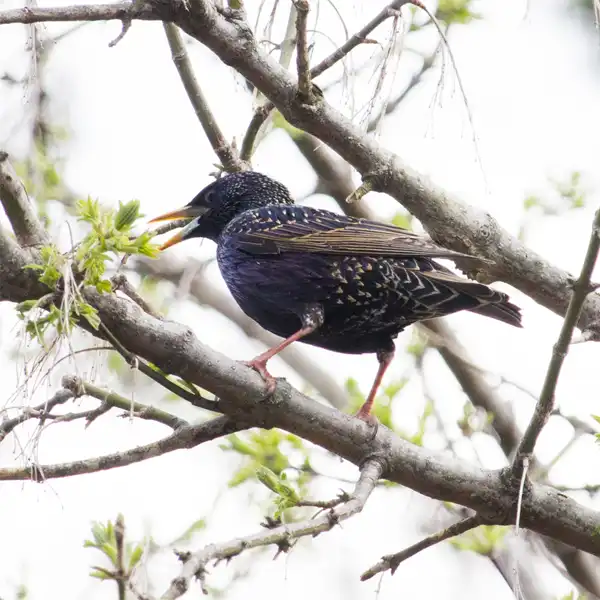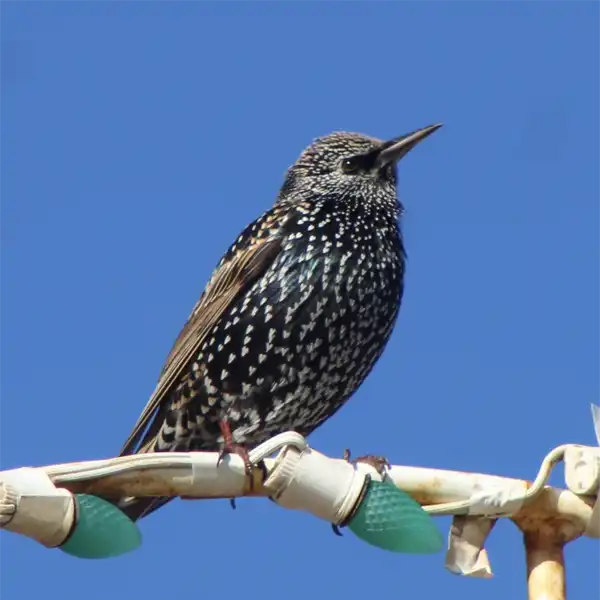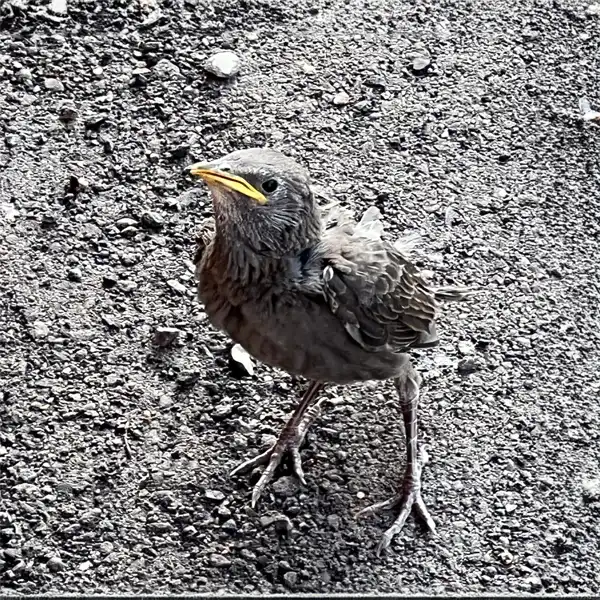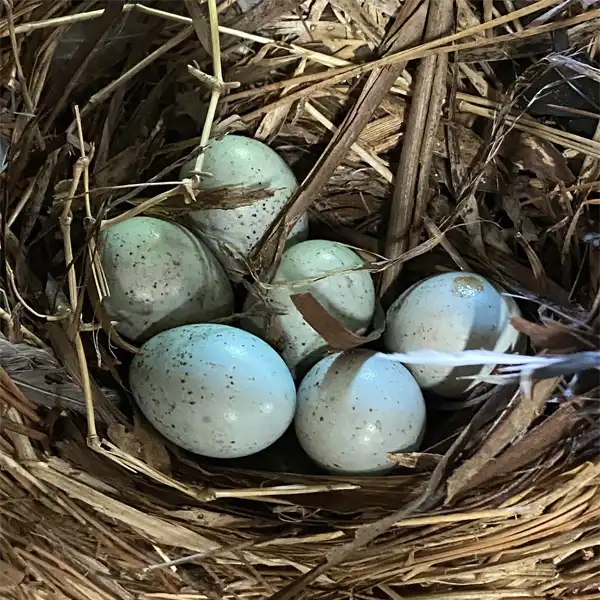Starlings
- Scientific Name
- Sturnus vulgaris
- Also Known As
- European Starling, Common Starling
- Range
- All of Florida
- Diet
- Insects, Fruits, Grains
- Life Expectancy
- 2 - 22 Years
Quick Links
European Starlings in Central Florida
The European starling (Sturnus vulgaris) is an abundant bird species that thrives in urban and agricultural environments of central Florida. Often considered a nuisance, starlings are identified by their dark plumage marked by light speckles. Read on to learn starling identification tips, biology facts, and control methods for starlings in central Florida.
Appearance and Identification
Starlings can be identified at juvenile and adult stages by their distinct physical characteristics
Starling species can be differentiated from other blackbirds by size, speckled plumage, square-tipped tail, and various vocalizations like whistles and clicks.
Maturation Rate
Starlings exhibit exceptionally rapid development from hatchlings to fully grown adults. Newly hatched chicks weigh only about 0.5 ounces (15 grams) but achieve full adult dimensions of 8.5 inches long (22 cm) in just 4 weeks.
Fledging occurs around 21 days after hatching. While technically independent, juvenile starlings remain with the parents for additional days to receive supplementary feeding as they learn to forage on their own.
By one year of age, juvenile starlings reach sexual maturity allowing them to breed in the following season. Adult plumage replaces the initial gray-brown down over the first fall and winter. This rapid life cycle supports starling adaptability and productivity.
Habits and Behavior
Starlings are highly social and gather in large, noisy flocks called murmurations. They roost together at night and forage together by day. Starlings walk and run on the ground while searching for food rather than hopping like many bird species.
Starlings are active year-round in central Florida. They can be seen perching on buildings, foraging in grassy areas, and swooping between trees. Flocks use congregation areas like shopping centers as daily meet-up spots. Starlings are vocal mimics and incorporate sounds from other birds, machinery, etc. into an extensive repertoire of songs, whistles, and calls.
Reproduction and Lifespan
Starlings begin breeding by 1 year old. The breeding season lasts from March to June in central Florida, corresponding with elevated rainfall and food availability. Females lay 4-6 pale blue eggs and incubate them for 10-13 days. Both parents feed the hatchlings, which leave the nest at 21-23 days old.
Starlings produce 1-2 broods per season. Lifespan ranges from 2 to 22 years, with most surviving 5 years on average. High productivity supports large populations despite predation and mortality factors.
Ideal Habitat and Range
Central Florida’s humid subtropical climate provides ideal habitat for starlings. Average temperatures range from the 60s°F (15°C) in January to the 90s°F (30s°C) in July. Rainfall patterns also sustain food supplies, with wetter summer months and drier winters.
The mix of rural pasturelands and urban development provides starlings with ample food and nesting sites. Cities offer cavities on buildings as well as food waste. Rural areas support populations that commute into cities daily. Central Florida’s variable seasonal conditions with a lack of extended freezing weather allows year-round starling activity and breeding.
Diet and Feeding
Starlings are omnivores and eat a diverse diet consisting of:
- Insects – beetles, ants, caterpillars, flies, maggots
- Fruits – mulberries, oranges, berries, olives
- Seeds – cereals, grains, grasses, peas, acorns
- Nectar from flowers like orchids and daylilies
- Livestock feed – cattle troughs, chicken feed
- Human waste – leftover foods, garbage
- Eggs and nestlings of other birds
Starlings forage for food sources throughout the day in open areas like lawns, parks, pastures, and agricultural fields. They probe soil and leaf litter with their strong bills in search of invertebrates. Starlings obtain most moisture from their food but will drink from puddles and bird baths.
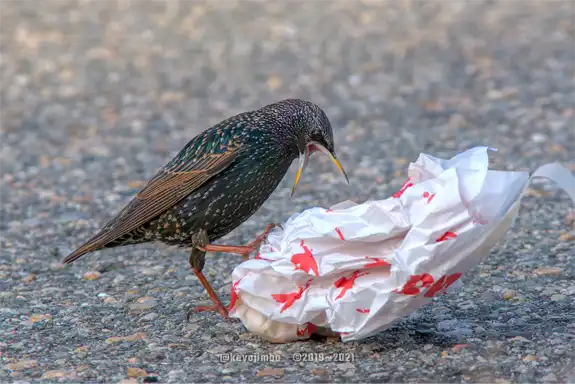
Photo 176499823 © keyojimbo, CC BY-NC

Common Health Risks
While less associated with human disease than pest bird species like pigeons, starlings can transmit some pathogens and parasites to people directly or via droppings including:
- Histoplasmosis – fungal infection from dried bird feces near roosts
- Salmonella – food poisoning from bacteria entering water and surfaces
- Cryptococcosis – fungal infection causing pneumonia-like illness
- Starling mites – temporary dermatitis from contact with infested nests
- Fleas and lice – can bite humans when starling nests are disturbed
Preventing Starling Infestations
The key to starling control is exclusion – sealing potential nesting sites and denying access to food sources. Trim back tree branches near buildings and install deterrents like netting, coils, or repellent gels on ledges, rafters, and signage. Use bird-proof containers for trash and food waste. Population control methods like trapping or avicides may also be warranted in some cases once exclusion is addressed. Maintaining cleanliness around outdoor eating areas deters large congregations.
Starlings in Central Florida – Conclusion
European starlings are boisterous and divisive birds – loved by some for their beauty and song, yet considered invasive pests by others. However, through inspection of potential entry points, exclusion modifications, and access denial to food supplies, starling infestations in urban structures can be prevented.
Signs like flocks gathering on rooftops and feces accumulation indicate established access that requires professional bird management. An integrated pest control approach ensures starlings do not overrun central Florida’s varied rural and metropolitan habitats.

